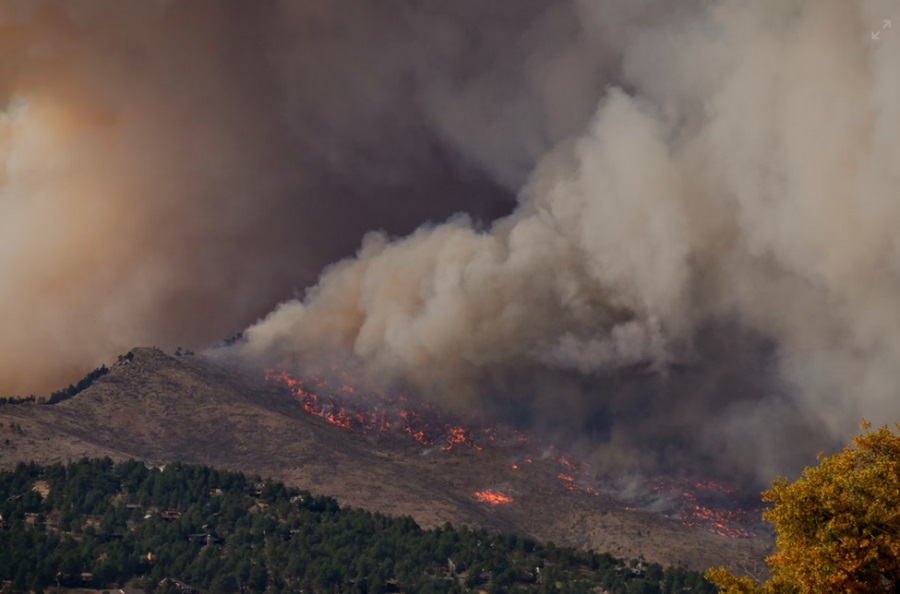The threat of wildfires during the summer months is increasing every year. It is more important now than ever to be proactive and prepare for this eventuality.
In this article, we’ll go through what steps you can take to protect yourself and the environment.
Understanding the Threat
Several factors contribute to the increased risk during the summer, including dry weather conditions, high temperatures, and strong winds. Human activities such as campfires, outdoor burning, and fireworks can also spark wildfires, further exacerbating the danger. In recent years, we have seen a devastating increase in the number of these wildfires.
The impact of wildfires extends far beyond immediate property damage. These blazes can devastate entire communities, destroy wildlife habitats, and degrade air quality, posing significant health risks to residents both near and far. Additionally, the economic toll of firefighting efforts, property loss, and ecosystem restoration can be substantial.
Awareness and vigilance are essential in wildfire-prone areas. By understanding the conditions that contribute to wildfire outbreaks and the potential consequences of these events, individuals and communities can take proactive steps to mitigate risks and prepare for the inevitable threat of wildfires.
Creating a Defensible Space
Creating a defensible space around properties is crucial for reducing the risk of property damage during wildfires.
Defensible space refers to the area around a structure where vegetation, landscaping, and other combustible materials are strategically managed to slow or stop the spread of wildfire and protect buildings from ignition.
Step One: Clear Vegetation
Remove dead vegetation, dry leaves, and other flammable materials from the immediate vicinity of the home. Keep grass mowed short and prune trees to maintain a clearance of at least 30 feet around structures.
Step Two: Maintain Firebreaks
Create firebreaks by clearing vegetation and creating gaps between trees and shrubs. Non-flammable materials such as gravel or stone can be used to create barriers that can help prevent the spread of fire.
Step Three: Choose Fire-Resistant Plants
Select fire-resistant plants for landscaping within the defensible space. These include species with high moisture content, low resin or sap production, and minimal dead leaves or branches accumulation.
Step Four: Create Fuel Breaks
In addition to clearing vegetation immediately around the home, create fuel breaks such as driveways, paths, or bare ground to reduce the likelihood of fire spreading further.

Being prepared is the best thing you can do. Image: Malachi Brooks / Unsplash
Developing an Emergency Plan
Developing an emergency plan is crucial for ensuring the safety and well-being of yourself, your family, and your property during wildfire season.
1. Assess Risks: Identify the potential risks and hazards associated with wildfires in your area, including evacuation routes, nearby fuel sources, and prevailing wind patterns.
2. Create a Communication Strategy: Establish a communication plan to stay in touch with family members and neighbors during emergencies. Designate a meeting point outside the evacuation zone and establish multiple methods of communication, including phone calls, text messages, and social media.
3. Pack Emergency Supplies: Prepare an emergency kit with essential supplies, including food, water, medications, first aid supplies, clothing, flashlights, batteries, and important documents. Customize the kit to meet the needs of your family and pets.
4. Safeguard Property: Take steps to safeguard your property by clearing flammable vegetation, maintaining defensible space, and securing outdoor furniture, propane tanks, and other combustible materials. Should your property be destroyed by a wildfire, lawyers are abundant for this who can help you claim money back.
5. Practice Drills: Conduct regular emergency drills with your family to ensure everyone knows what to do in the event of a wildfire. Review evacuation routes, communication procedures, and emergency contacts.
Fire Safety Practices
Fire safety practices are essential for individuals and communities to prevent wildfires and protect lives, property, and natural resources.
Proper Disposal of Flammable Materials
• Dispose of cigarettes, matches, and other flammable materials properly in designated containers or ashtrays. Avoid tossing cigarette butts or lighting fires in windy conditions.
Campfire Safety
• If camping, use designated fire pits and follow all campground rules regarding fires. Keep campfires small, never leave them unattended, and completely extinguish them before leaving the area.
Clearing Vegetation
• Keep grass, leaves, and other flammable vegetation well-maintained and cleared from around structures, propane tanks, and other combustible materials. Create defensible space to reduce the risk of fire spreading to homes and buildings.
Stay Informed
Stay informed about wildfire conditions, weather forecasts, and evacuation orders by monitoring local news, fire department updates, and official sources of information. Sign up for emergency alerts and notifications in your area.
What do you Need in your Emergency kit?
1. Water: Store at least one gallon of water per person per day for at least three days, for drinking and sanitation.
2. Non-Perishable Food: Stock up on a three-day supply of non-perishable food items such as canned goods, granola bars, nuts, and dried fruits.
3. Medications: Pack a supply of prescription medications, as well as over-the-counter medications such as pain relievers, antacids, and antihistamines. Include a well-stocked first aid kit with bandages, antiseptic wipes, gauze pads, adhesive tape, scissors, tweezers, and a thermometer.
4. Multi-Tool or Swiss Army Knife: Include a multi-tool or Swiss Army knife for various tasks and repairs.
5. Maps: Include local maps and evacuation routes in your emergency kit to help navigate in case of evacuation.
6. Clothing and Blankets: Pack a change of clothes, sturdy shoes, and blankets or sleeping bags to stay warm and comfortable.
While wildfires can be devastating, there are steps we can take to protect ourselves and our loved ones. By being proactive, the effect of wildfires can be somewhat minimized.







